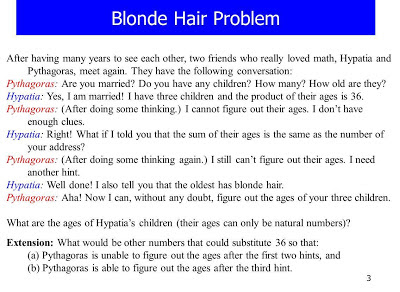The session began as a follow on to yesterday's EAL focus; discussing language in mathematics.
Common confusion with words came up:
- minus & negative
- trials & events
- alternative and alternate angles
- random & strage
- area & perimeter
In order to combat this, a possible idea is to use games such as Taboo (or Oobat, as pupils are encouraged rather than not allowed to use the words on the cards) and Articulate (or Mathiculate, link here.)
Definitions
So it turns out that none of us can define anything - on being asked to draw a diagram, we nearly all drew something with 4 sides and a rectangle - a very particular case! Instead, a much more open example such as:
We were encouraged to focus on the meaning of words rather than their definitions; especially in considering the context in which the word was used.
One possible ideas was to split the class in half, having them each working on different things, e.g.
- multipling and adding fractions
- adding and multipling negative numbers
- intercept and gradient
- a squared and 2a
A Level Teaching
Nick's session on A level teaching followed, with a match-up activity of graphs, their derivatives and stationary points.
We then created our own activity for a topic we may be teaching.
Our activity was on momentum and is most definitely a work in progress...
The first steps involve matching the worded problem with initial and final diagrams:
then sorting these sets into one of the boxes in the table below:
Conservation of energy and momentum are both considerations here!
Problem Solving
Gabriel's session began with a blonde problem (I really did feel blonde after failing to answer it!)
A discussion followed on the importance of giving us time to first read and think about the question, before group discussion was allowed. We were also given a task to step out of problem solving to write down what we felt about the task, and again at the end - a great way to consider emotions with problem solving.



